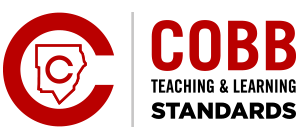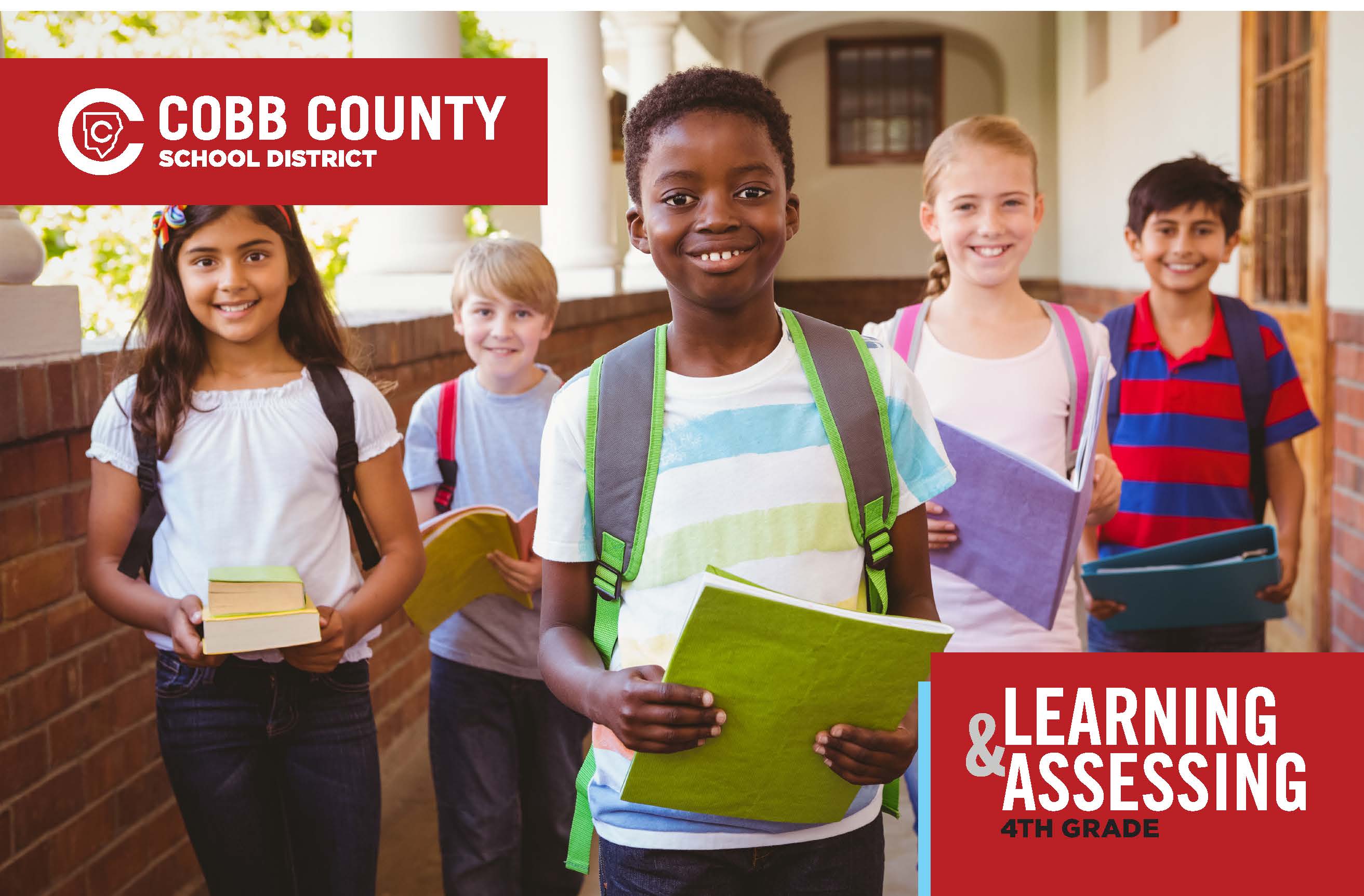4th Grade Learning

What Do Students Learn In 4th Grade?
4th GRADE LEARNING :
The Cobb County School District is committed to providing your child an academic experience that will develop his or her knowledge and skills at every grade level and to ensuring a strong foundation is established for your child to reach his or her greatest potential. Our teaching is aligned with content standards and our teachers bring those standards to life for your child through various strategies designed to meet your child’s learning strengths and needs.
In Cobb County classrooms, students are immersed every day in learning experiences based on exploration, problem-solving, and critical thinking in all content areas, including the core areas of English Language Arts, Mathematics, Social Studies, and Science; and in specialized academic content including Health, Music, Physical Education, Technology, Visual Arts, and World Languages*. Excellence in teaching guides your child’s educational experience from Kindergarten to graduation and into life.
*Programming available varies at local schools
ENGLISH LANGUAGE ARTS:
Fourth-grade students refine their reading, writing, and communication skills through daily engagement with a wide range of texts and tasks. As they read both literary and informational texts, including fiction, nonfiction, and poetry, they practice reading aloud with fluency and deepen their comprehension by analyzing details, summarizing key ideas, and interpreting meaning. Students grow as independent thinkers, using texts to investigate topics, support claims with evidence, and explore abstract ideas. Their writing becomes more purposeful and organized as they plan, draft, revise, and publish original compositions across multiple genres. They also begin to use technology more intentionally to present and share their work. Students continue developing their command of language, including grammar, spelling, and sentence structure, and become more flexible in adapting their language for different audiences and purposes. With a growing vocabulary and increased awareness of how language works, fourth graders participate in discussions, present their ideas clearly, and build confidence in their identities as readers, writers, and critical thinkers.
MATHEMATICS:
In Grade 4, instructional time should regularly incorporate the 8 Mathematical Practices, the Statistical Reasoning Framework, and the Mathematical Modeling Framework through four big ideas of content: (1) numerical reasoning, (2) measurement and data (statistical) reasoning, (3) patterning and algebraic reasoning, and (4) geometric and spatial reasoning. Students are expected to develop place value understanding, part-whole strategies for addition, subtraction, multiplication, and division of whole numbers, reasoning of patterns and algebra, reasoning with measurement of time and objects, geometric angle measurement strategies, an understanding of geometric properties of shapes, and data and statistical reasoning methods.
SCIENCE:
Fourth grade science revolves around hands-on, student-centered exploration of the natural world. Throughout the year, students engage with Earth, Life, and Physical Science, developing their understanding of how the world works through investigations and experiments. They explore diverse topics, such as forces, light, sound, ecosystems, and the nature of stars and the solar system. By making careful observations and collecting data, students strengthen their scientific knowledge while sharpening critical thinking skills.
SOCIAL STUDIES:
In fourth grade, students continue with year two of a three-year study of United States history in which all four strands (history, geography, civics/government, and economics) are integrated. Students begin the year learning about the French and Indian War and end with the Reconstruction period. The geography strand emphasizes the influence of geography on U.S. history during these same time periods. In the civics/government strand, students learn about concepts and rights contained within our founding documents. The economic strand uses material from the history strand to deepen understanding of economic concepts.
SPECIALS:
From Health and PE to Visual Arts and Music, 4th grade students broaden their love and understanding of healthy lifestyles, culture, arts and humanities. Playful learning is at the heart of each one of the 4th grade specials. In Art, using a range of media and subjects, students explore and critique art throughout our world and use their discoveries to inspire the creation of personal works. In Music, students build upon previous skills increasing their understanding of rhythmic and melodic notation by reading and writing music. They strive for independence while playing instruments and singing. In PE and Health, reducing injury and improving health is emphasized, as is lifetime fitness and skill development.
PARENTS TIPS: Reading
Daily reading as a family is an enjoyable and important way to grow a love of learning. Create time to read during breakfast or in the evening before bed. Share your own favorite childhood books and talk about why the book is one you still love. Visit your local library and take advantage of school book fairs and literacy events. By sharing what you love about reading and showing them how much it means to you by reading with them, students will see how important literacy is in their lives.
How Do We Assess Students In 4th Grade?
Your child will have a variety of classroom assessments that will aid his or her teacher in knowing how to provide the best possible instruction for your child. These assessments will also help you know how well your child is learning and what extra support may be needed. In addition, your child will participate in some standardized assessments that are used to gauge how well your child is doing in his or her grade level.
The State of Georgia requires that students in grades 3-5 participate in the annual administration of state assessments. The state assessment is called the Georgia Milestones Assessment System. Georgia Milestones measures how well students have learned the knowledge and skills in core subjects. Students in grade 4 will take an End of Grade (EOG) assessment as part of the Georgia Milestones in math and language arts. The EOG will include multiple choice, short answer, and technology-enhanced questions. The language arts EOG has a third section, which focuses on writing.
All students in grades K-9 participate in the universal screening process for reading and math using a digital inventory. Your 4th grader’s progress in reading and math will be measured three times a year.
TESTING IN 4th GRADE:
Mark the Calendar: 4th grade End of Grade (EOG) Assessment: April-May
Question Types: Multiple-choice questions (called selected-response); Short answers (called constructed response); Extended response – the EOG has a writing section during which students write an extended response to a question derived from paired-passages students read.
PARENT TIPS: Assessment
Parents can support students in easing any concern or anxiety about assessment:
- Talk with your child about any tests or assessments.
- Explain that assessment is a natural and important part of any learning. Tests help students understand their thinking better and make improvements for better performance in the future.
- Remind your child to pay attention to the directions and to listen carefully as they are read. Encourage your child to take time to understand the questions before selecting an answer.
- A good night’s rest is the best way to arrive focused on test day!
Remember that assessment is an important and helpful part of learning for students of all ages. Your support and involvement in your child’s education is critical to success in school and in life. Research shows when parents play a key role in their child’s learning, their child’s achievement excels.
What Instructional Resources Are Used In 4th Grade?
CLICK HERE TO DOWNLOAD A LIST OF BOARD APPROVED INSTRUCTIONAL RESOURCES FOR FOURTH GRADE
Instructional resources are provided to students and teachers to support teaching and learning. The titles listed below have been recommended to our Board by a committee of teachers, parents and community representatives and approved through the textbook adoption process (See Board Rule IFAA-R). Additional resources to enhance the instruction are constantly added by local schools and individual teachers.
Course/Content Area | Resource | Publisher |
English Language Arts | Wonders | McGraw Hill |
Mathematics | Custom Developed Mathematics Content for Grade 4 | Cobb County School District |
Science | Georgia Science, Grade 4 | HMH |
Science | Science Dimensions, Grade 4 | HMH |
Social Studies | Studies Weekly | Studies Weekly |
What Is My Student's Framework For Learning In 4th Grade?
Fourth Grade Teaching & Learning Frameworks
English/Language Arts | Math | Science | Social Studies

Cobb Teaching & Learning Standards - English Language Arts
CLICK HERE TO DOWNLOAD 4th GRADE COBB TEACHING & LEARNING STANDARDS FOR ELA
Cobb Teaching & Learning Standards - Mathematics
CLICK HERE TO DOWNLOAD 4th GRADE COBB TEACHING & LEARNING STANDARDS FOR MATH
Cobb Teaching & Learning Standards - Social Studies
CLICK HERE TO DOWNLOAD 4th GRADE COBB TEACHING & LEARNING STANDARDS FOR SOCIAL STUDIES
Cobb Teaching & Learning Standards - Science
CLICK HERE TO DOWNLOAD 4th GRADE COBB TEACHING & LEARNING STANDARDS FOR SCIENCE

